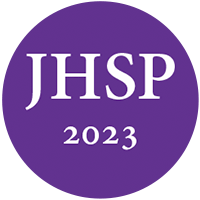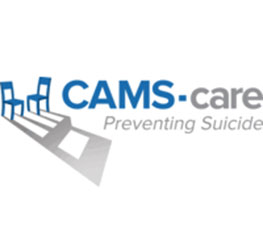The professional home for health service psychologists.
Join a community of 15,000 psychologists and trainees.
Learn it today. Apply it tomorrow.
Connecting you to what you need in your career.
Making a difference.
Metcalfe, R.E., Guidinger, C.L. & Stormshak, E.A. The Family Check-Up: Ecological Family-Based Assessments in the Context of Potential Child Abuse or Chaotic Home Environments. J Health Serv Psychol 47, 17–29 (2021). https://doi.org/10.1007/s42843-021-00028-3
One percent of all children in the United States are estimated to be abused or neglected each year, equating to about 700,000 children per year. Limited parenting skills are one of the most robust risk factors for child abuse and neglect. The present paper describes the Family Check-Up (FCU), a trauma-informed, strengths-based and comprehensive family management intervention aimed at promoting positive parenting skills, reducing child maladaptive behaviors, and optimizing child and family outcomes. By evaluating various ecological and contextual factors, the FCU targets a range of parenting and child behavior difficulties to prevent child abuse/neglect while improving long-term child and family outcomes.
Visit CE.NationalRegister.org to access the continuing education course.
Achenbach, T.M., & Rescorla, L.A. (2001). Manual for the ASEBA School-Age Forms & Profiles. Burlington, VT: University of Vermont, Research Center for Children, Youth, & Families.
American Psychological Association. (2017). Ethical principles of psychologists and code of conduct (2002, amended effective June 1, 2010, and January 1, 2017). https://www.apa.org/ethics/code/
Barnett, J. E., Wise, E. H., Johnson-Greene, D., & Bucky, S. F. (2007). Informed consent: Too much of a good thing or not enough? Professional Psychology: Research and Practice, 38(2), 179–186. https://doi.org/10.1037/0735-7028.38.2.179
Barnett, M. A., Paschall, K. W., Mastergeorge, A. M., Cutshaw, C. A., & Warren, S. M. (2020). Influences of parent engagement in early childhood education centers and the home on Kindergarten school readiness. Early Childhood Research Quarterly, 53(4), 260-273. https://doi.org/10.1016/j.ecresq.2020.05.005
Barth R. P. (2009). Preventing child abuse and neglect with parent training: evidence and opportunities. The Future of Children, 19(2), 95–118. https://doi.org/10.1353/foc.0.0031
Blease, C. R., Lilienfeld, S. O., & Kelley, J. M. (2016). Evidence-based practice and psychological treatments: The imperatives of informed consent. Frontiers in Psychology, 7, Article 1170. https://doi.org/10.3389/fpsyg.2016.01170
Caruthers, A. S., Van Ryzin, M. J., Dishion, T. J. (2014). Preventing high-risk sexual behavior in early adulthood with family interventions in adolescence: outcomes and developmental processes. Prevention Science, Suppl 1(0 1), S59-S69. https://doi.org/10.1007/s11121-013-0383-9
Centers of Disease Control and Prevention (CDC; 2017). NCHS data brief: Prevalence of obesity among adults and youth: United States, 2015–2016 (No 288). Retrieved from https://www.cdc.gov/nchs/data/databriefs/db288.pdf
Chen, M. & Chan, K. L. (2015). Effects of parenting programs on child maltreatment prevention: A meta-analysis. Trauma, Violence, and Abuse, 17(1), 88-104. https://doi.org/10.1177/1524838014566718
Child and Family Center. (2001). CFC Youth Questionnaire. Unpublished instrument. Child and Family Center, University of Oregon, Eugene, OR.
Connell, A. M., Dishion, T. J., Yasui, M., & Kavanagh, K. (2007). An adaptive approach to family intervention: Linking engagement in family-centered intervention to reductions in adolescent problem behavior. Journal of Consulting and Clinical Psychology, 75(4), 568-579. https://doi.org/10.1037/0022-006X.75.4.568
Crnic, K. A., & Greenberg, M. (1990). Minor parenting stresses with young children. Child Development, 61, 1628-1637. https://doi.org/10.2307/1130770
Crooks, C. V., & Wolfe, D. A. (2007). Child abuse and neglect. In E. J. Mash & R. A. Barkley (Eds.), Assessment of childhood disorders (p. 639–684). The Guilford Press.
Dishion, T. J., Connell, A., Weaver, C., Shaw, D., Gardner, F., & Wilson, M. (2009). The Family Check-Up with high-risk indigent families: Preventing problem behavior by increasing parents’ positive behavior support in early childhood. Child Development, 79(5), 1395–1414. https://doi.org/10.1111/j.1467-8624.2008.01195.x
Dishion, T. J. & Kavanagh, K. (2003). Intervening in adolescent problem behavior: A family-centered approach. New York, NY: Guilford Press.
Dishion, T. J., Kim, H., Stormshak, E. A., & O’Neil, M. (2014). A brief measure of early-adolescence peer association and social acceptance (PASA): validity in an ethnically diverse sample of early adolescents. Journal of Clinical Child and Adolescent Psychology, 43(4), 601–612. https://doi.org/10.1080/15374416.2013.876641
Dishion, T. J., Knutson, N., Brauer, L., Gill, A., & Risso, J. (2010). Family Check-Up: COACH ratings manual. Child and Family Center; 6217 University of Oregon, Eugene, OR 97403. Unpublished coding manual.
Dishion, T. J., & Stormshak, E. A. (2007). Intervening in children’s lives: An ecological, family-centered approach to mental health care. Washington, DC: American Psychological Association
Dishion, T. J., Stormshak, E. A., & Kavanagh, K. A. (2012). Everyday parenting: A professional’s guide to building family management skills. Research Press.
Dumas, J. E., Lemay, P., & Dauwalder, J. P. (2001). Dynamic analyses of mother-child interactions in functional and dysfunctional dyads: a synergetic approach. Journal of Abnormal Child Psychology, 29(4), 317–329. https://doi.org/10.1023/a:1010309929116
Dyer, K. (2013). Antecedent-Behavior-Consequence (A-B-C) Analysis. In Volkmar F.R. (Ed.) Encyclopedia of Autism Spectrum Disorders. Springer. https://doi.org/10.1007/978-1-4419-1698-3_1003
Ellis, L. K., & Rothbart, M. K. (2001). Revision of the early adolescent temperament questionnaire. Poster presented at the Biennial Meeting of the Society for Research in Child Development. Minneapolis, Minnesota.
Fortson, B. L., Klevens, J., Merrick, M. T., Gilbert, L. K., & Alexander, S. P. (2016). Preventing child abuse and neglect: A technical package for policy, norm, and programmatic activities. Atlanta, GA: National Center for Injury Prevention and Control, Centers for Disease Control and Prevention.
Forgatch, M. S., Patterson, G. R., & DeGarmo, D. S. (2005). Evaluating fidelity: predictive validity for a measure of competent adherence to the Oregon model of parent management training. Behavior Therapy, 36(1), 3-13. https://doi.org/10.1016/s0005-7894(05)80049-8
Fosco, G. M., Van Ryzin, M. J., Connell, A. M., Stormshak, E. A. (2016). Preventing adolescent depression with the family check-up: Examining family conflict as a mechanism of change. Journal of Family Psychology, 30(1), 82-92. https://doi.org/10.1037/fam0000147
Garbacz, S. A., Stormshak, E. A., McIntyre, L. L., & Kosty, D. (2019). Examining family-school engagement in a randomized controlled trial of the family check-up. School Psychology, 34(4), 433–443. https://doi.org/10.1037/spq0000284
Good Clinical Practice Network United States Clinical Trials Registry (2006). A family intervention for adolescent problem behavior. https://ichgcp.net/clinical-trials-registry/NCT01490307
Goodman, R. (1997). The strengths and difficulties questionnaire: A research note. Journal of Child Psychology and Psychiatry, 38, 581-586. https://doi.org/10.1111/j.1469-7610.1997.tb01545.x
Hussey, J. M., Chang, J. J. & Kotch, J. B. (2006). Child maltreatment in the United States: Prevalence, risk factors, and adolescent health consequences. Pediatrics, 118(3), 933-942. https://doi.org/10.1542/peds.2005-2452
Jabson, J. M., Dishion, T. J., Gardner, F. E. M., & Burton, J. (2004). Relationship Process Code ν-2.0. training manual: A system for coding relationship interactions. The Child and Family Center; 160 East 4th Avenue, Eugene, OR: 2004. pp. 97401–2426. Unpublished coding manual.
Kalichman, S. C. (1999). Mandated reporting of suspected child abuse: Ethics, law, & policy (2nd ed.). American Psychological Association. https://doi.org/10.1037/10337-000
Kim, H. K., Pears, K. C., Fisher, P. A., Connelly, C. D., & Landsverk, J. L. (2011). Trajectories of maternal harsh parenting in the first 3 years of life. Child Abuse and Neglect, 34(12), 897–906. https://doi.org/10.1016/j.chiabu.2010.06.002
Knerr, W., Gardner, F., Cluver, L. (2013). Improving positive parenting skills and reducing harsh and abusive parenting in low- and middle-income countries: A systematic review. Prevention Science, 14, 352–363. https://doi.org/10.1007/s11121-012-0314-1
Kroenke, K., Spitzer, R. L., & Williams, J. B. (2003). The Patient Health Questionnaire-2: Validity of a two-item depression screener. Medical Care, 41(11), 1284-92. https://doi.org/10.1097/01.MLR.0000093487.78664.3C
Lunkenheimer, E. S., Dishion, T. J., Shaw, D. S., Connell, A. M., Gardner, F., Wilson, M. N., & Skuban, E. M. (2008). Collateral benefits of the Family Check-Up on early childhood school readiness: indirect effects of parents’ positive behavior support. Developmental Psychology, 44(6),1737-52. https://doi.org/10.1037/a0013858
Lunkenheimer, E. S., Lichtwarck-Aschoff, A., Hollenstein, T., Kemp, C. J., & Granic, I. (2016). Breaking down the coercive cycle: How parent and child risk factors influence real-time variability in parental responses to child misbehavior. Parenting: Science and Practice, 16(4), 237-256. https://doi.org/10.1080/15295192.2016.1184925
Maynard, B. R., Vaughn, M. G. Nelson, E. J., Salas-Wright, C. P.,.Heyne, C. A., & Kremer, K. P. (2017). Truancy in the United States: Examining temporal trends and correlates by race, age, and gender. Child and Youth Services Review, 81, 188-196. https://doi.org/10.1016/j.childyouth.2017.08.008
McEachern, A. D., Dishion, T. J.,Weaver C. M., Shaw, D. S., Wilson, M. N., & Gardern F. (2012). Parenting Young Children (PARYC): Validation of a self-report parenting measure. Journal of Child and Family Studies, 21(3), 498-511. https://doi.org/10.1007/s10826-011-9503-y
Metzler, C. W., Biglan, A., Ary. D. V., & Li, F. (1998). The stability and validity of early adolescents’ reports of parenting constructs. Journal of Family Psychology, 12, 600-619. https://doi.org/10.1037/0893-3200.12.4.600
Miller, W. R., & Rollnick, S. (2013). Motivational interviewing: Helping people change (3rd edition). Guilford Press.
National Institute on Drug Abuse & University of Michigan. (2019). Monitoring the future, national survey results on drug use, 1975-2019. National Institute on Drug Abuse, U.S. Dept. of Health and Human Services, National Institutes of Health. Retrieved from: http://www.monitoringthefuture.org//pubs/monographs/mtf-overview2019.pdf
Office of Juvenile Justice and Delinquency Prevention (OJJDP; 2018). Statistical briefing book: Juvenile arrests. https://www.ojjdp.gov/ojstatbb/crime/qa05101.asp
Ogden, T., Forgatch, M. S., Askeland, E., Patterson, G. R., & Bullock, B. M. (2005). Implementation of parent management training at the national level: The case of Norway. Journal of Social Work Practice, 19(3), 317–329. https://doi.org/10.1080/02650530500291518
Pew Research Center (2015). Parenting in America: Outlook, worries, aspirations are strongly linked to financial situation. Retrieved from: https://www.pewresearch.org/wp-content/ uploads/sites/3/2015/12/2015-12-17_parenting-in-america_FINAL.pdf
Pianta, R. C. & Nimetz, S. L. (1991). Relationships between children and teachers: Associations with classroom and home behavior. Journal of Applied Developmental Psychology, 2, 379–393. https://doi.org/10.1016/0193-3973(91)90007-Q
Prochaska, J. Q, & DiClemente, C. C. (1984). The transtheoretical approach: Crossing traditional boundaries of change. Dorsey Press.
Ringle, J. L., Mason, W. A., Oats, R. G., & Cogua, J. (2019). Parenting Children and Adolescents (PARCA) scale English to Spanish translation: An investigation of measurement invariance. Journal of Family Psychology, 33(8), 938–944. https://doi.org/10.1037/fam0000559
Rothbart, M. K., Ahadi, S. A., Hershey, K., & Fisher, P. (2001). Investigations of temperament at three to seven years: The Children’s Behavior Questionnaire. Child Development, 72(5), 1394-1408. https://doi.org/10.1111/1467-8624.00355
Sabourin, S., Valois, P., & Lussier, Y. (2005). Development and Validation of a Brief Version of the Dyadic Adjustment Scale With a Nonparametric Item Analysis Model. Psychological Assessment, 17(1), 15–27. https://doi.org/10.1037/1040-3590.17.1.15
Smith, J. D., Dishion, T. J., Moore, K. J., Shaw, D. S., & Wilson, M. N. (2013a). Video feedback in the Family Check-Up: Indirect effects on observed parent–child coercive interactions. Journal of Clinical Child & Adolescent Psychology, 42(3), 405-417. httsp://doi.org/10.1080/15374416.2013.777917
Smith, J. D., Dishion, T. J., Shaw, D. S., & Wilson, M. N. (2013b). Indirect effects of fidelity to the family check-up on changes in parenting and early childhood problem behaviors. Journal of Consulting and Clinical Psychology, 81(6), 962–974. https://doi.org/10.1037/a0033950
Smith, J. D., Montaño, Z., Dishion, T. J., Shaw, D. S., & Wilson, M. N. (2015). Preventing weight gain and obesity: Indirect effects of the Family Check-Up in early childhood. Prevention Science, 16(3), 408-419. https://doi.org/10.1007/s11121-014-0505-z
Smith, L., Jackson, S. E., Vancampfort, D., Jacob, L., Firthe, J., Grabovach, I., McDermott, D., Yang, L., López-Sánchez, G. F., Niederkrotenthaler, T., Veronese, N., & Koyanagi, A. (2020). Sexual behavior and suicide attempts among adolescents aged 12–15 years from 38 countries: A global perspective. Psychiatry Research, 287, 112564. https://doi.org/10.1016/j.psychres.2019.112564
Stith, S. M., Ting Liu, L., Davies, C., Boykin, E. L., Alder, M. C., Harris, J. M., Dees, J.E. (2009). Risk factors in child maltreatment. A meta-analytic review of the literature. Aggression and Violent Behavior, 14, 13-29. doi:10.1016/j.avb.2006.03.006
Stormshak, E. A., Connell, A., & Dishion, T. J. (2009). An adaptive approach to family-centered intervention in schools: Linking intervention engagement to academic outcomes in middle and high school. Prevention Science, 10(3), 221–235. https://doi.org/10.1007/s11121-009-0131-3
Stormshak, E. A., DeGarmo, D., Garbacz, S. A., McIntyre, L. L., & Caruthers, A. (2020a). Using motivational interviewing to improve parenting skills and prevent problem behavior during the transition to kindergarten. Prevention Science. Advance online publication. https://doi.org/10.1007/s11121-020-01102-w
Stormshak, E. A., McIntyre, L. L., Garbacz, S. A., & Kosty, D. B. (2020b). Family-centered prevention to enhance parenting skills during the transition to elementary school: A randomized trial. Journal of Family Psychology, 34(1), 122-127. https://doi.org/10.1037/fam0000570
Twenge, J. M., Martin, G. N., & Campbell, W. K. (2018). Decreases in psychological well-being among American adolescents after 2012 and links to screen time during the rise of smartphone technology. Emotion, 18(6), 765–780. https://doi.org/10.1037/emo0000403
Tyler, S., Allison, K., & Winsler, A. (2006). Child neglect: Developmental consequences, intervention, and policy implications. Child & Youth Care Forum, 35, 1–20. https://doi.org/10.1007/s10566-005-9000-9
Van Ryzin, M. J., Stormshak, E. A., & Dishion, T. J. (2012). Engaging parents in the Family Check-Up in middle school: Longitudinal effects on family conflict and problem behavior through the high school transition. Journal of Adolescent Health, 50(6), 627–633. https://doi.org/10.1016/j.jadohealth.2011.10.255
Wang, M. V., Aarø, L. E., & Ystrom, E. (2018). Language delay and externalizing problems in preschool age: A prospective cohort study. Journal of Abnormal Child Psychology, 46, 923–933. https://doi.org/10.1007/s10802-017-0391-5
Willner, C. J., Gatzke-Kopp, L. M., & Bray, B. C. (2017). The dynamics of internalizing and externalizing comorbidity across the early school years. Developmental Psychopathology, 28(4), 1033-1052. https://doi.org/10.1017/S0954579416000687
U.S. Department of Health & Human Services, Administration for Children and Families, Administration on Children, Youth and Families, Children’s Bureau. (2020). Child Maltreatment 2018. Available from https://www.acf.hhs.gov/cb/research-data-technology /statistics-research/child-maltreatment
Copyright © 2025 All rights reserved. National Register of Health Service Psychologists









